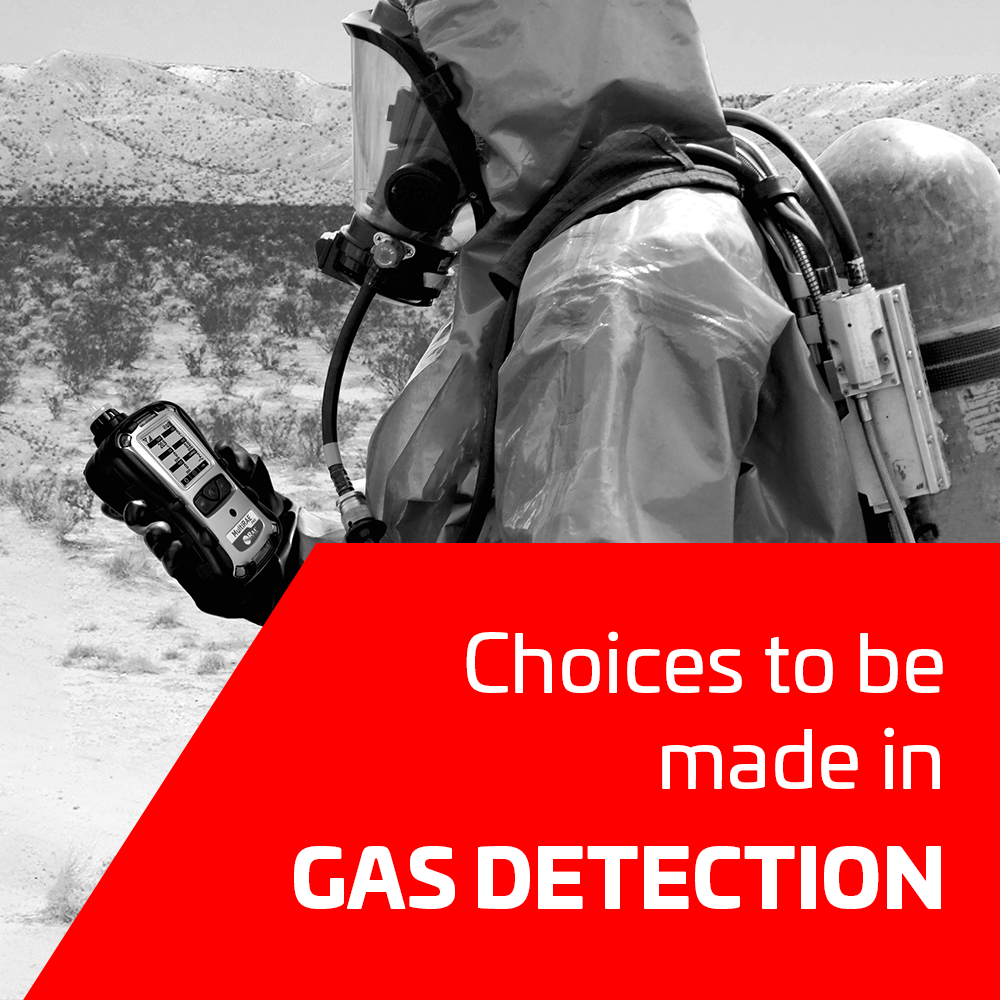Gas detection is hard enough to do well with the best equipment. So, how do you get the right instrument for the job?
There’s a great many types of gas detection solutions: colorimetric gas measuring tubes, portable gas detection in pumped or diffusion varieties, area monitors, fixed gas detection and even flame detection. How do we find out what is the best way of detecting gas in your specific situation?
While a deceptively simple question, more questions arise. Is the most cost effective way the best way? Is there added value to be had from a more expensive solution? What are the important parameters in the decision making process?
What is the purpose of the measurement?
This should be the first question to answer. It matters hugely if you want to protect your people or your assets. Also, your people might be wearing personal protective equipment, or only wear it when you expect concentration levels are too high.
It doesn’t even only matter to the measuring range of the instrument you need: it matters to your procedures as well. What is the alarm of your instrument going to mean: Gear up? Evacuate? Do not enter? Sensitive decisions regarding your process are made on the basis of the findings of this instrument. Hence, we had better get it right.
What gases can we expect and in what concentration do we want to detect them? Is there a sensor that can detect the gas at the desired concentration? Do the different gasses interfere with the different sensors? What gases are in the atmosphere regularly, in what combination, in what concentration? These are important questions, because mixtures can cause interference in sensors. Even not every gas sampling tube may be able to distinguish beyond doubt between compounds, especially if they are chemically related. Mixtures may necessitate a broad-band measuring solution like a photo ionization detector. Even a LEL sensor is basically a broad-band measuring solution.
What gases are you expecting?
Normally, for a production facility, you have a pretty good idea what gases to expect. (If not, we will help you with this step, as well.) But maybe it can pay off to exclude some more options, to be absolutely certain.
Different compounds pose different risks, of course: explosion, asphyxiation, poisoning are just the main categories. The concentrations those compounds occur in, has further implications for the instruments to procure: too high a concentration might render most electrochemical sensors useless, for example. Target gases might be lighter or heavier than air, necessitating different measurement spots to best prevent any risky situation whenever possible.
After we have determined the gases to expect, it is time to make a risk assessment, as per local laws and regulations. To do that, it may be necessary to monitor concentration levels of the compounds that carry risk, to see if they keep within permissible limits. When they are structurally over any established limits, workers should be protected by upgrading the process or through personal protective equipment. If they are over the limits occasionally, it depends on any causality with the production process. Procedures might have to be tightened. But also, when is it safe again?
All of this matters when making any decisions about gas detection. Whether you need personal monitors as part of personal protection, or fixed equipment to get a grip on the concentration levels for only a few compounds, facility-wide, or anything in between.
What are the standards?
What are the risks that cannot be alleviated? What level of safety should be provided? Procedures need to be followed that are specifically designed to make any action as risk-free as possible. Training of personnel is vital to do this successfully. Whether to handle the risk associated with certain production processes or with work in a certain set of circumstances (like confined spaces, or container unloading).
So, what next?
Ideally a specialist in the field of gas detection can offer you complete monitoring of your gas related hazards, whether this is about shutdown management based on rental devices, long term lease or the sales of gas detection equipment, proper advise, support, training, calibration, maintenance and repair are crucial. Once you consult a specialist it is important those factors are properly filled in, a well-equipped workshop, properly trained and experienced technicians and trainers are mandatory to get the implementation of your prevention plan carried out in a proper way.
We at 7Solutions can offer you specialists in the field of gas measurement and control technology. We can offer you any equipment necessary for risk assessments or monitoring. Please contact us for more information.

